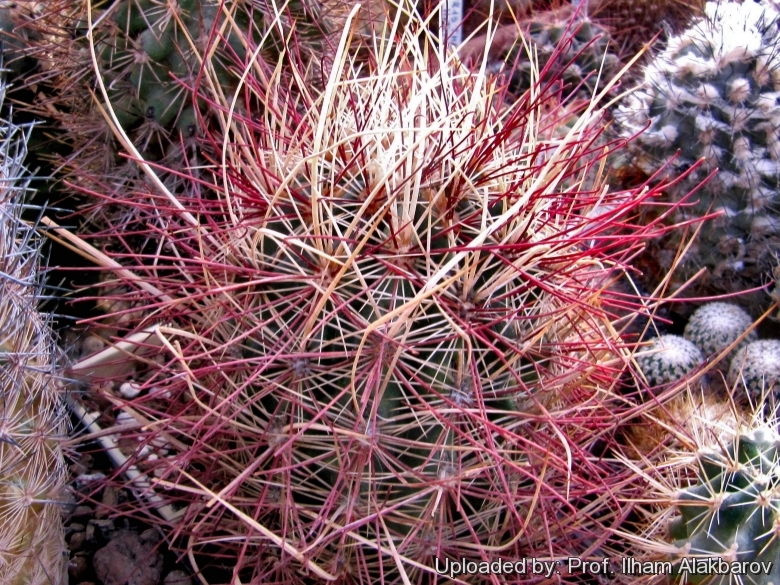
Sclerocactus polyancistrus Photo by: Prof. Ilham Alakbarov
Origin and Habitat: The range of occurrence of Sclerocactus polyancistrusSN|19506]]SN|19506]] goes from South-western Nevada to south-eastern California.
Altitude: 500-2500 metres above sea level.
Habitat: It grows in a very arid and dry environment in Mojave Desert, on rocky alluvial, often alkaline soils, on basalt rock hillsides limestone hillsides and desert pavement; on south to southwest-facing slopes among Mojave creosote-bush and desert pinyon-juniper woodland. Sclerocactus polyancistrusSN|19506]]SN|19506]] has a wide range and occurs in inaccessible areas and in protected areas. It is locally uncommon and scattered. No major threats to this species are known. However, in the southern extent of the range there has been habitat loss due to urbanization.
Synonyms:
See all synonyms of Sclerocactus polyancistrus
back
Accepted name in llifle Database:Sclerocactus polyancistrus (Engelm. & J.M.Bigelow) Britton & RoseCactaceae (Britton & Rose) 3: 213, pl. 23. 1922 [12 Oct 1922]Synonymy: 5
back
Common Names include:
ENGLISH: Mojave Devil's-claw Cactus, Many-spined Devil's-claw Cactus, Many-hooked Viznagita, Hermit Cactus, Mohave Fishhook Cactus, Mojave Fishhook Cactus, Redspined Fishhook Cactus
RUSSIAN (Русский): Склерокактус многокрючковый
Description: Sclerocactus polyancistrusSN|19506]]SN|19506]] is easily recognized by its big stem size (the giant of the genus), by numerous hooked, dense, central spines (five to nine) clothing and obscuring stems in a colourful assortment of red and white spines and large flowers with spicy, pungent odour.
Stem: Single or in clusters, cylindric or more or less elongate, 10-40 long, 5-9 cm across.
Ribs: 13-17.
Spines: Dense, obscuring stems.
Radial spines: 10-18 per areole, white, straight, flat, 20-50 mm long.
Central spines: 9-12 per areole, 5-8 hooked, red or reddish brown (infrequently yellow or white), some hooked, 30-100 mm long. Adaxial central spines usually 3 per areole, white, usually curved or twisted, flat, usually 35-130 mm long.
Flower: With spicy pungent odour, funnelform, 5-10 cm in diameter outer perianth segments with greenish purple midstripes, inner segments rose-purple to magenta (rarely white).
Blooming season: April to June.
Fruit: Green, tan, or red, barrel-shaped, 2,2-5 cm, dry at maturity;
Remarks: S. polyancistrus is the only component of the genus that lacks papillae on the style, and its style possesses grooves, somewhat reminiscent of Ferocactus.
Subspecies, varieties, forms and cultivars of plants belonging to the Sclerocactus polyancistrus group
Bibliography: Major references and further lectures
1) Butterworth, C. & Porter, J.M. 2013. Sclerocactus polyancistrus. In: IUCN 2013. "IUCN Red List of Threatened Species". Version 2013.2. <www.iucnredlist.org>. Downloaded on 06 April 2014.
2) Edward Anderson “The Cactus family” Timber Press, Incorporated, 2001
3) James Cullen, Sabina G. Knees, H. Suzanne Cubey "The European Garden Flora Flowering Plants: A Manual for the Identification of Plants Cultivated in Europe, Both Out-of-Doors and Under Glass" Cambridge University Press, 11/Aug/2011
4) David R Hunt; Nigel P Taylor; Graham Charles; International Cactaceae Systematics Group. "The New Cactus Lexicon" dh books, 2006
5) Lyman David Benson “The Cacti of the United States and Canada” Stanford University Press, 1982
6) Fritz Hochstätter "An den Standorten von Pediocactus und Sclerocactus" Selbstverlag, 1989.
7) Fritz Hochstätter “The Genus Sclerocactus”. Selbstverlag, 2005
 Sclerocactus polyancistrus Photo by: Prof. Ilham Alakbarov
Sclerocactus polyancistrus Photo by: Prof. Ilham Alakbarov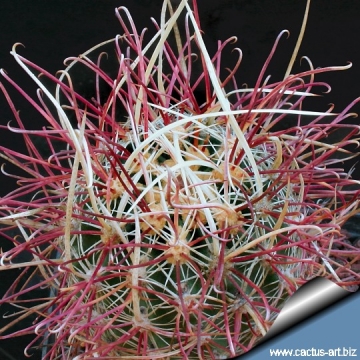 Sclerocactus polyancistrus Photo by: Cactus Art
Sclerocactus polyancistrus Photo by: Cactus Art Sclerocactus polyancistrus Photo by: Cactus Art
Sclerocactus polyancistrus Photo by: Cactus Art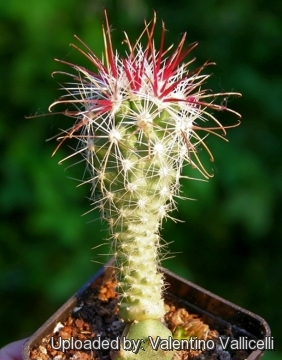 Sclerocactus polyancistrus Photo by: Valentino Vallicelli
Sclerocactus polyancistrus Photo by: Valentino Vallicelli Sclerocactus polyancistrus Photo by: Valentino Vallicelli
Sclerocactus polyancistrus Photo by: Valentino Vallicelli Sclerocactus polyancistrus Photo by: Cactus Art
Sclerocactus polyancistrus Photo by: Cactus Art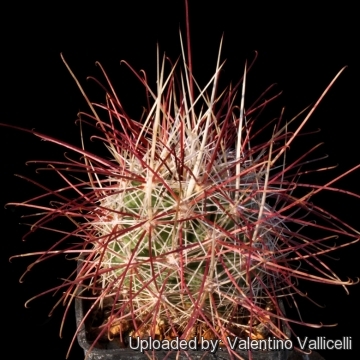 Sclerocactus polyancistrus Photo by: Valentino Vallicelli
Sclerocactus polyancistrus Photo by: Valentino Vallicelli (Locality: Sud Tonapah, Nevada) A colourful assortment of red and white spines. Photo by: Valentino Vallicelli
(Locality: Sud Tonapah, Nevada) A colourful assortment of red and white spines. Photo by: Valentino VallicelliCultivation and Propagation: This is one of the most beautiful cacti but also one of the more difficult to be cultivated.
Very easily rot! Only few people have tried for long time to cultivate it, usually after a few months the plant inexorably dies.
It’s thought that’s better to watch this species in photo or in the natural habitat rather than to try to cultivate it.
For this reasons the plant is usually grafted on a frost hardy stock.
This plant need full sun and a very good ventilation, especially in winter.
Propagation: Seeds are extremely difficult to germinate (only 2-3 percent of seeds germinate) The germination is really difficult and if some seedling finally sprout, as they start to grows they disappear one by one. Grafting is often used to speed growth rate and to create a back-up for plants in collection.
Your Photos
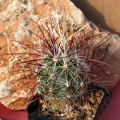
by Valentino Vallicelli
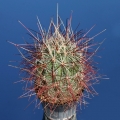
by Valentino Vallicelli
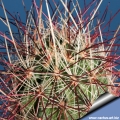
by Cactus Art






















